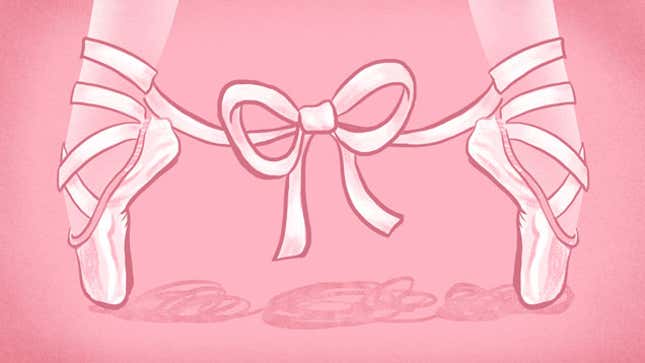Misadventures at Adult Beginner Drop-In Ballet
Latest

I’m not a real ballerina, and I’m not a little girl, so I’d walked by the ballet studio for years without ever thinking about taking a class. Even while I was reading about the history of dance and watching YouTube videos of Sylvie Guillem, I scarcely examined the wall of “not for me” I’d built around the concept. It wasn’t until I saw a kids class through the window, a row of seven- or eight-year-olds at the barre, all curved arms and pointed toes, that I had a muscle memory so vivid it propelled me to sign up for my first attempt at Adult Beginner Drop-In Ballet.
I had no idea who even goes to an adult beginner drop-in ballet class, but, as I might have expected, the crowd was just people—the same as you’d see in the subway. They wore workout clothes, the men in tank tops and loose pants, some of the women in gauzy skirts. One woman was wearing those tights that go over the leotard and down halfway across her ballet slippers, which seemed really cool to me. Another had a baggy old tee shirt and booty shorts on over pink tights. There was a splendid variety of soft ballet shoes, all immensely appealing. I just wore socks, because if it turned out to be terrible, I didn’t want to have spent money on gear.
There were students who look like they’d been very serious about dance recently, and maybe they still are. Real dancers. There were women who don’t look like anyone’s stereotypical dancer—ages ranged from twenties to sixties, all body types. They looked calm and confident, chatting with each other while stretching. In theory, there’s nothing about an adult ballet class that should be so different from any other exercise class, but there was a voice in my head arguing against me. What’s the point, even? How good do you think you’re going to get? You’ll never be dainty, you’re never going to float around in a tutu. But then the teacher came in, crossing the room with understated fluidity. She radiated self-mastery rather than theater—and that’s what I was there for, in theory.
Mikhail Baryshnikov was my first crush ever. Our VHS tape of his Nutcracker was my security blanket and my valentine. As a lovesick three-year-old, I said to my sister, “Look at his tights!” My sister said, “What’s so special about them?” Me—”It’s not the tights, it’s what’s inside them!” meaning his legs, of course. Of course.
-

-

-

-

-

-

-

-

-

-

-

-

-

-

-

-

-

-

-

-

-

-

-

-

-

-

-

-

-

-

-

-

-

-

-

-

-

-

-

-








































